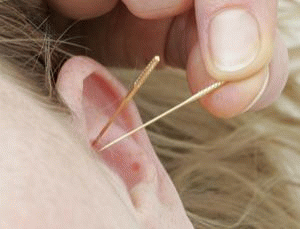The first ever study of the adverse effects of acupuncture in
state-funded acupuncture clinics in the UK has found that the procedure is
largely safe, but not as safe as advertised. In extreme cases, it could even
put lives at risk.
Despite this, claims that
acupuncture is completely safe could soon lead to the procedure being funded by
Medicare, the US government-funded medical benefits programme. Acupuncture is
already government-funded in much of Europe.
Investigators from the National
Patient Safety Agency, part of the UK's government-funded National Health
Service, assembled all reports of adverse events following acupuncture
treatment in NHS clinics between 2009 and 2011. In these clinics, acupuncture
is provided by conventionally qualified doctors and therapists, who are also
trained to perform acupuncture. This is offered in several NHS hospitals, GP's
surgeries and nearly all NHS pain clinics.
The investigators found 325
reports of adverse effects. There is no data for the total number of
acupuncture treatments given, so the frequency of these events cannot be
calculated. But other studies in Germany and the UK have found adverse effects
following some 10 per cent of treatments.
Some of the reports were merely
of sloppy practice. In 100 cases, patients were left with needles still in
them, sometimes hours longer than intended or even after they or the staff went
home. Some needles subsequently had to be surgically removed.
Definition of harm
Of the 325 adverse reports, 309
were rated as involving little or no harm. This included 162 people
experiencing dizziness and fainting when the needle was inserted.
Five people experienced lung
collapse, or pneumothorax, caused by the needle puncturing the pleural
membranes around the lung.
The fact that only one of these
collapses was reported as "severe" – and one was listed as "no
harm" even though lung collapse can be fatal – rings alarm bells for
Edzard Ernst of the University of Exeter, a leading expert on the evidence-based
evaluation of alternative medicine, who helped conduct the study.
"Clearly this is not a
highly risky treatment," he says. "But acupuncturists are adamant
that it is devoid of risk, and that is not the case." If a patient has
trouble breathing after treatment and the acupuncturist does not suspect lung
collapse, they could send the patient home, where, if both lungs go, the
patient can die. "They are in denial. They don't realise there's a
potential problem, and that is the problem."
Ernst says that studies of acupuncture
in other countries and in the UK outside the NHS have revealed 86 deaths after
acupuncture between 1965 and 2009, most of them from lung collapse. Another
risk, he says, is to the 6 per cent of people who naturally have a hole in
their breastbone, near an acupuncture point. The hole is covered with
ligaments, so a doctor cannot feel it. "Acupuncture needles go right
through and penetrate the membranes around the heart," with lethal effect,
says Ernst.
The British Acupuncture Council,
a professional association, cites two studies "showing the risk of a
serious adverse reaction to acupuncture is less than 1 in 10,000. This is far
less than many orthodox medical treatments".
Any such risk assessment,
however, must be weighed against the treatment's benefits says Ernst.
"Critical analysis of existing evidence shows acupuncture might help in
back pain, osteoarthritis and nausea," he says. "That's about it. But
the NHS uses it for just about anything, even smoking cessation." This means
that even though the risks are small, "they could well outweigh the
benefit, which is next to non-existent".
Leading US acupuncturist Phil
Veneziano writing in the Huffington Post, says acupuncturists "provide a
safe, side effect-free method of recovery" from post-operative pain and
nausea, constipation, urinary difficulties, hypertension, anxiety and insomnia.
He predicts that by 2014, the US health care laws could "formally
recognise acupuncture as a profession, opening the door to Medicare coverage
for acupuncture."
Journal reference: International
Journal of Risk & Safety in Medicine, DOI:
10.3233/JRS-2012-0569


No comments:
Post a Comment